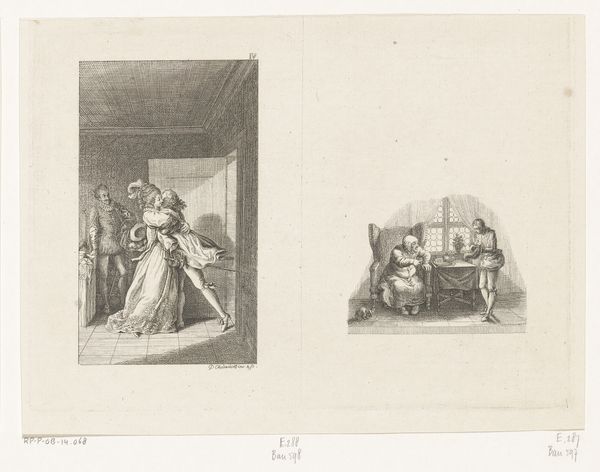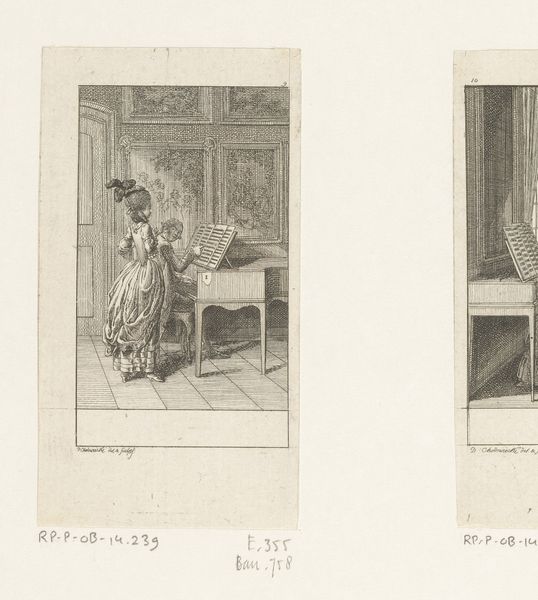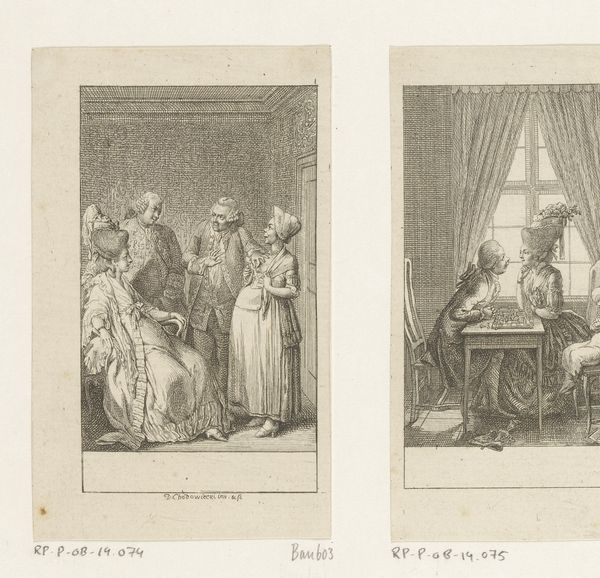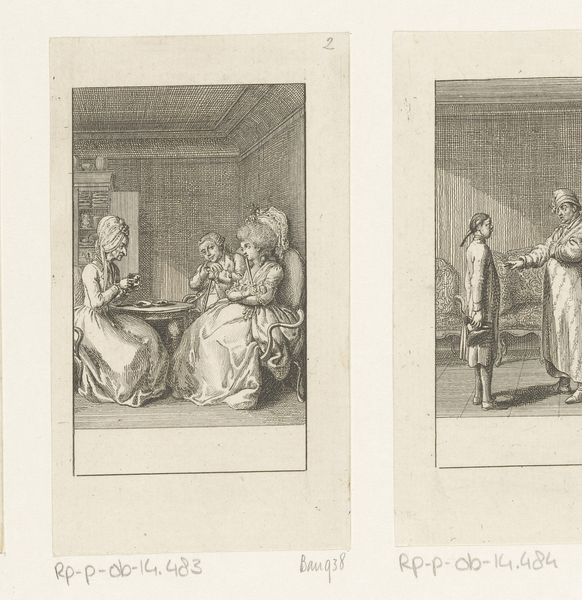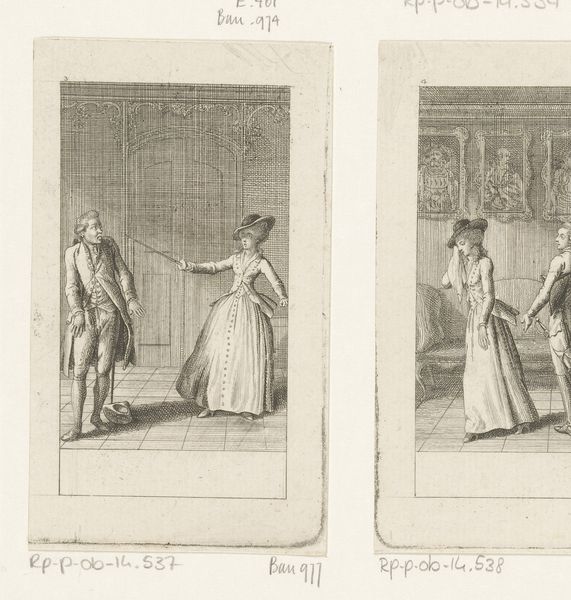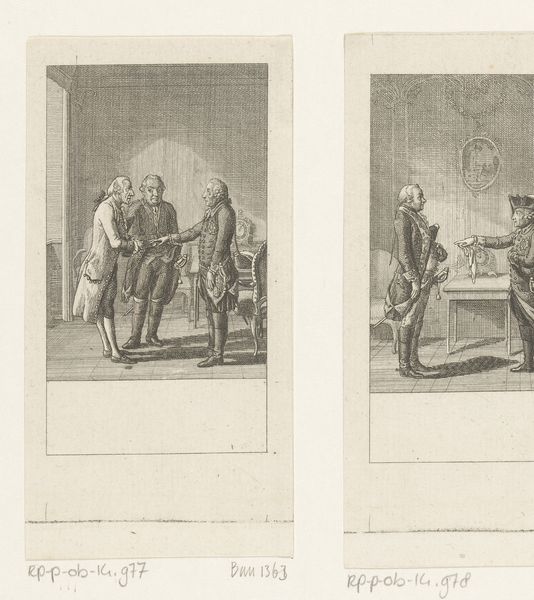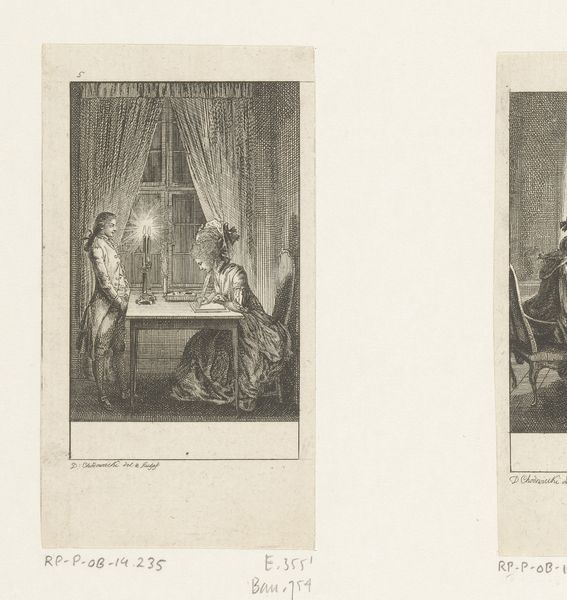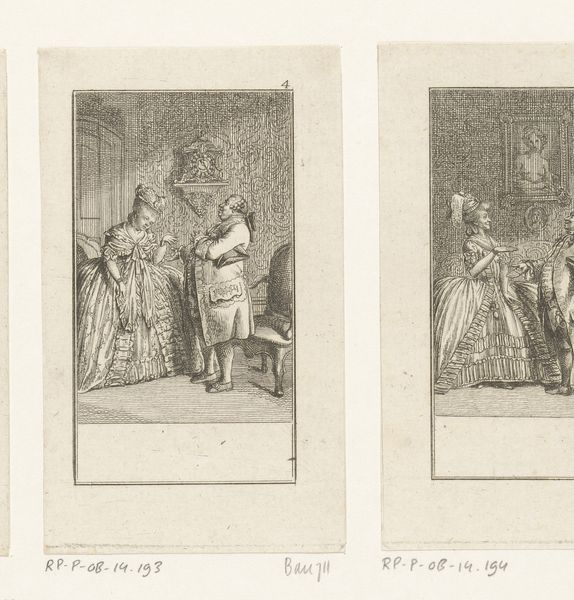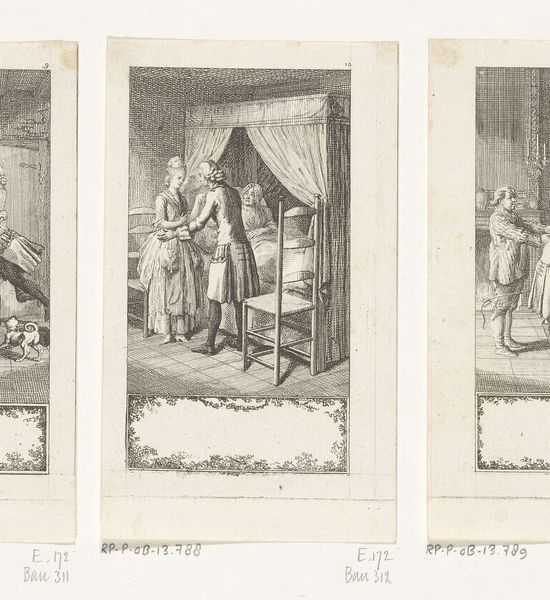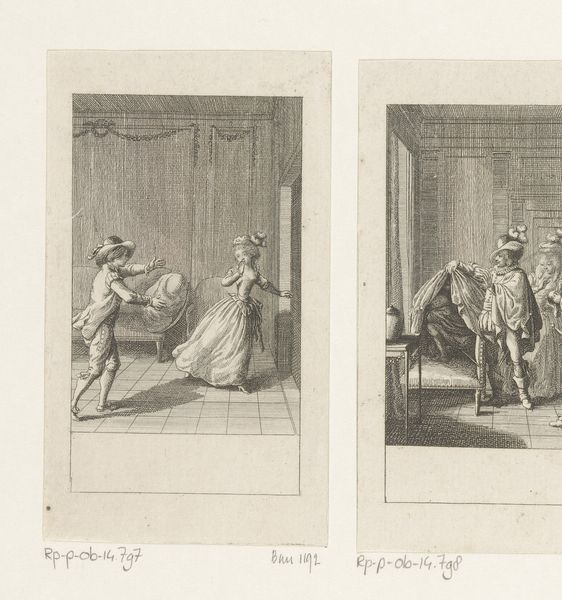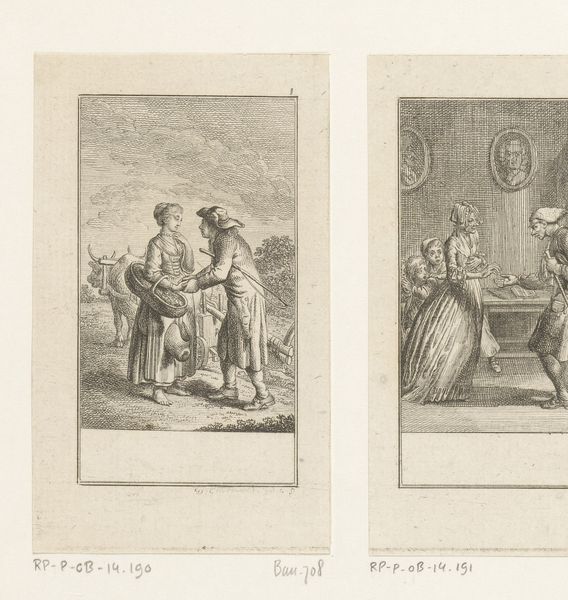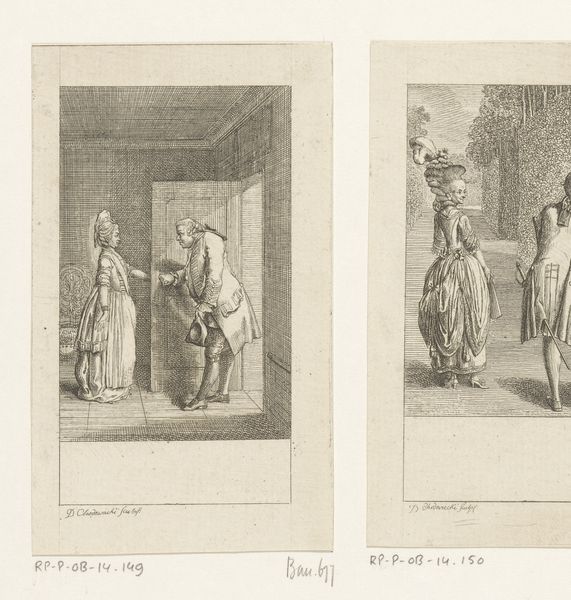
Dimensions: height 109 mm, width 60 mm
Copyright: Rijks Museum: Open Domain
Editor: Here we have Daniel Nikolaus Chodowiecki's "Muziekles" from 1780, an engraving currently held in the Rijksmuseum. I'm struck by the level of detail the artist achieved with such a delicate medium. What’s your take on it? Curator: What's fascinating here is not just the scene depicted, but the means of its production and circulation. This isn't a grand oil painting meant for a wealthy patron. Instead, it's an engraving, a more accessible art form. We must consider the engraver’s skill—the labor involved in transferring the image onto the plate, the mass production that makes such images available to a wider audience. Editor: So, you are saying it democratizes art in some way? Curator: Exactly. Consider who might purchase or possess such an engraving. It speaks to the growing middle class with aspirations of refinement and cultural awareness. Music lessons, the scene depicts, becomes a marker of status, a commodity available through this very process of mass production. Editor: I never considered it that way. I always just thought about the aesthetic value. How would that influence the art, in a material way? Curator: The materials limit, but also define the product and, ultimately, consumption of art itself. This method dictated the kind of images Chodowiecki made, making them more reproducible and easily consumable. It asks: how do the limitations of the material actually define what makes something beautiful or noteworthy? Editor: I see your point. The act of creating these engravings transformed both art making and how it's distributed. Thank you. Curator: The social and material implications can easily get lost when we view them solely as aesthetically driven objects. Food for thought.
Comments
No comments
Be the first to comment and join the conversation on the ultimate creative platform.
